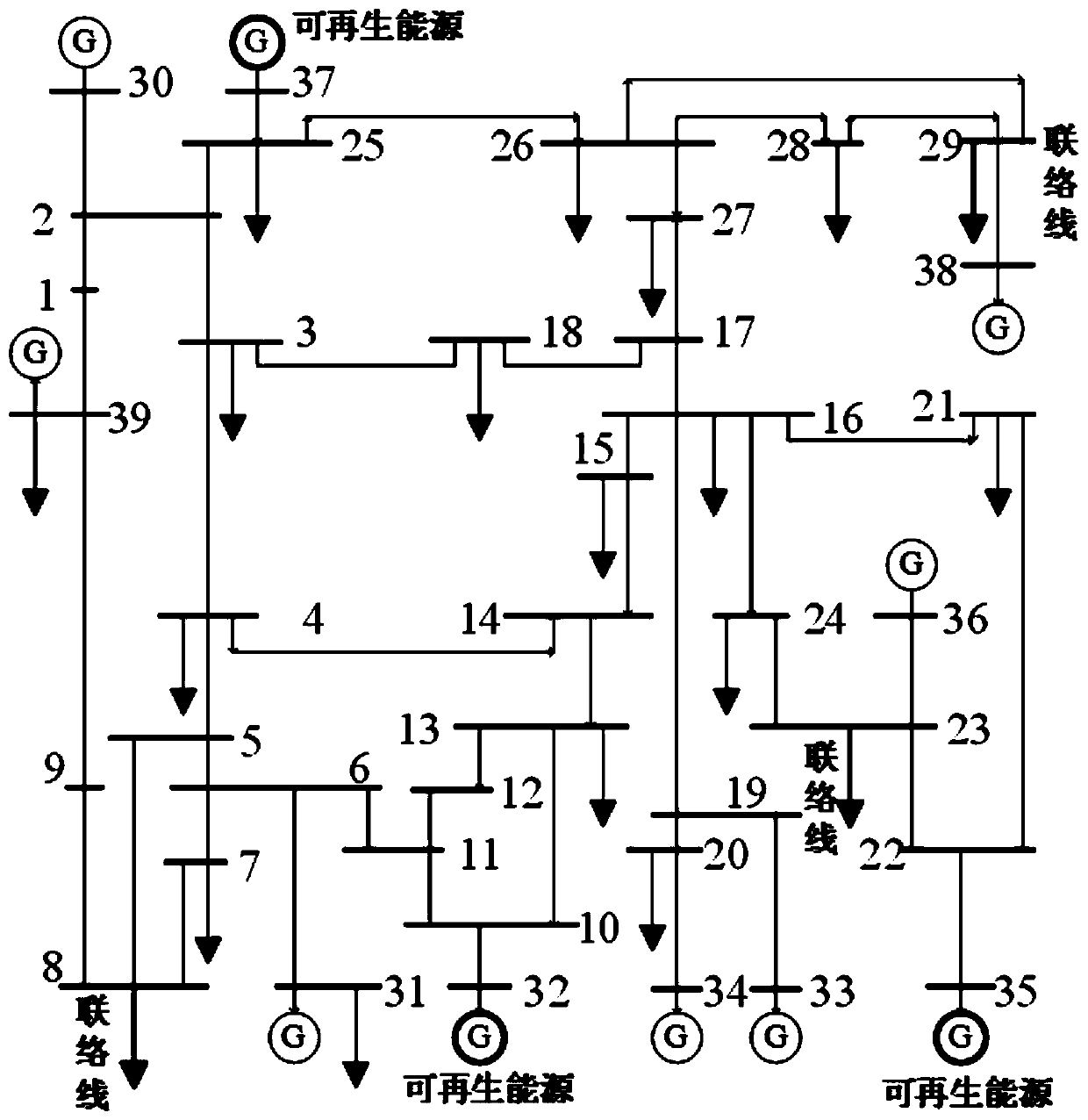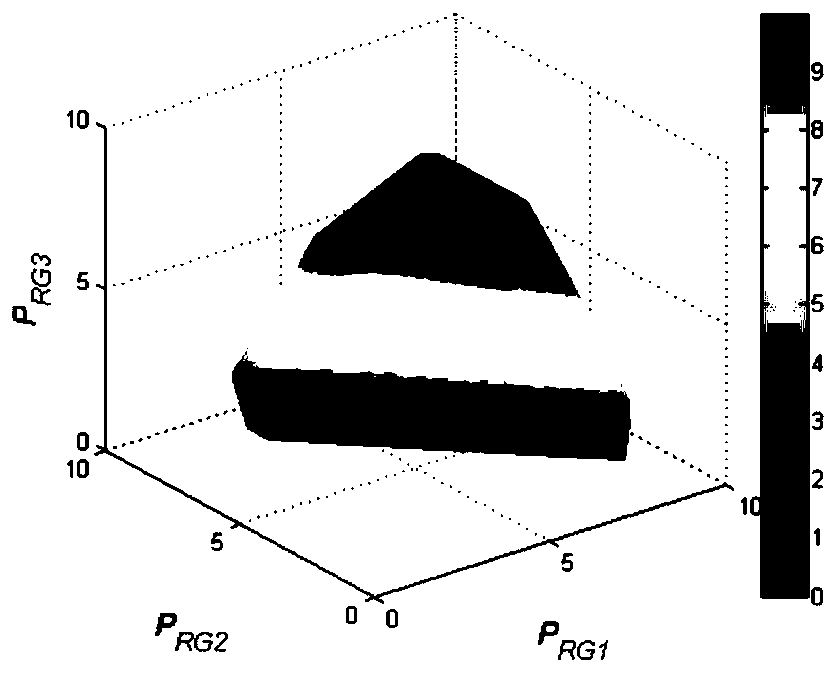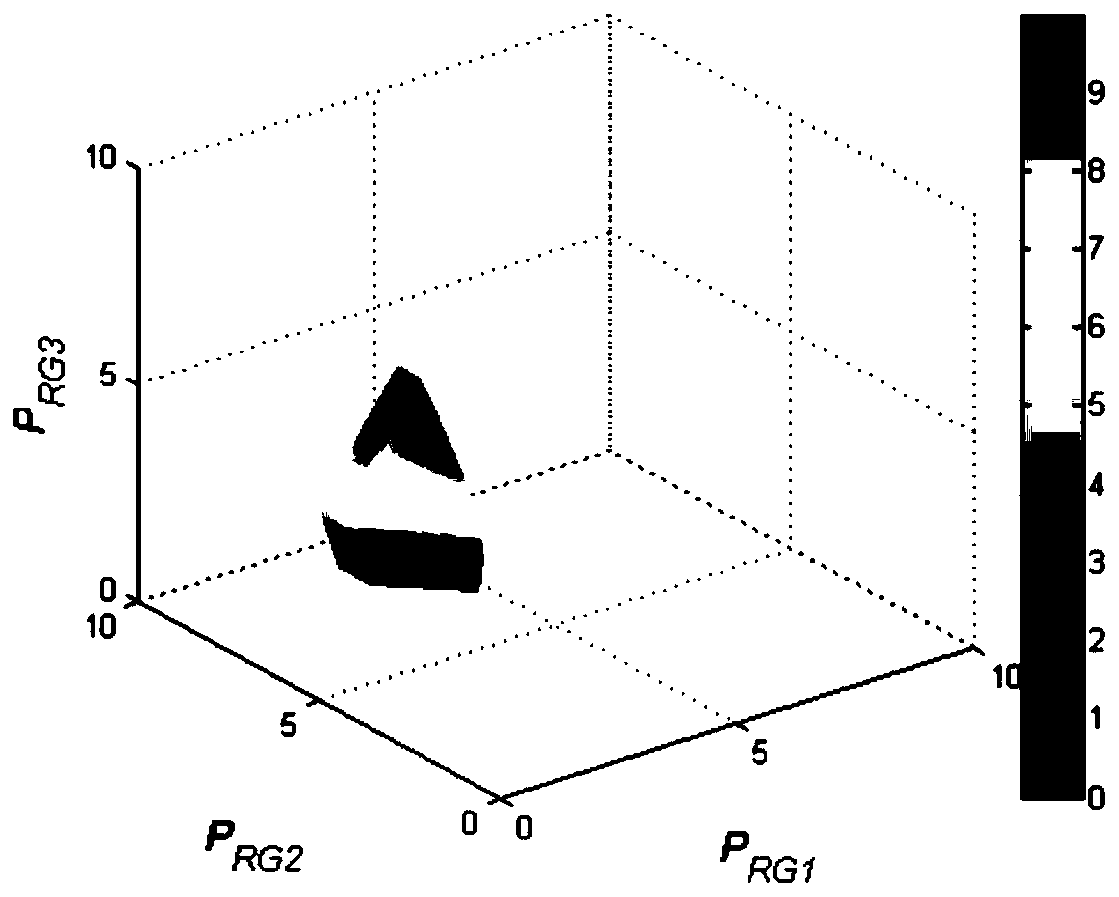Static equivalent assessment method for renewable energy consumption capability by considering elastic space
A technology of renewable energy and elastic space, applied in the field of value evaluation, can solve the problems of not considering the elastic space of the system and the capacity of delivery and consumption, and the space model of the feasible domain of the capacity of renewable energy.
- Summary
- Abstract
- Description
- Claims
- Application Information
AI Technical Summary
Problems solved by technology
Method used
Image
Examples
Embodiment 1
[0087] The static equivalent evaluation method of renewable energy consumption capacity considering elastic space mainly includes the following steps:
[0088] 1) Obtain power system data.
[0089] The power system data mainly includes node load data, line parameters and generator parameters.
[0090] The line parameters mainly include the unit-node connection matrix C n×u , Power transfer transfer distribution factor matrix A l×n , line transmission capacity upper limit and the lower limit of line transmission capacity T k .
[0091] The generator parameters mainly include the output upper limit of the renewable energy unit Lower limit of output of renewable energy units P RGi , Non-renewable energy unit output upper limit and non-renewable energy unit output lower limit P NRGj .
[0092] 2) Establish the equivalent evaluation model of power system elasticity space.
[0093] The main steps of establishing a power system elastic space equivalent evaluation mode...
Embodiment 2
[0147] see figure 1 , an experiment to verify the static equivalent evaluation method of renewable energy accommodation capacity considering elastic space, mainly includes the following steps:
[0148] 1) Establish an IEEE39 node test system, including 10 generators, the generators at nodes 32, 35, and 37 are renewable energy generators, and the loads at nodes 8, 23, and 29 are the power sent out by tie lines.
[0149] 2) Input node load power
[0150]
[0151] In the formula, is the node load power vector, where 39 is the number of grid nodes.
[0152] 3) Establish line transmission power equation constraints
[0153] First obtain the unit-node connection matrix C 39×10 and the power transfer transfer distribution factor matrix A 46×39 ,as follows:
[0154]
[0155] Then use the input data in (18) to establish constraints as follows:
[0156]
[0157] T 46×1 =[T 1 T 2 …T k …] T (k=1,2,...,46)(20)
[0158]
[0159] In the formula: T 46×1 is the line ...
Embodiment 3
[0210] see Figure 2 to Figure 21 , a comparative experiment of a static equivalent evaluation method for renewable energy consumption capacity considering elastic space, mainly includes the following steps:
[0211] 1) Set the comparison scheme:
[0212] M0: The elastic space of the power system is not considered;
[0213] M1: Taking into account the deep peak shaving of the power system and the elastic space for emergency capacity increase of the line.
[0214] In order to measure the accuracy of the M0 and M1 method of renewable energy unit output feasible region and the feasible region of the connection line, the projection of the feasible region space on the two-dimensional plane and the three-dimensional plane is used for visual comparison. See the attached figure for details. The result is as follows:
[0215] (I) Analysis of the Feasible Domain Results of Renewable Energy Unit Output Considering the Elastic Space of Power System
[0216] (1) Comparison of feasible ...
PUM
 Login to View More
Login to View More Abstract
Description
Claims
Application Information
 Login to View More
Login to View More - R&D
- Intellectual Property
- Life Sciences
- Materials
- Tech Scout
- Unparalleled Data Quality
- Higher Quality Content
- 60% Fewer Hallucinations
Browse by: Latest US Patents, China's latest patents, Technical Efficacy Thesaurus, Application Domain, Technology Topic, Popular Technical Reports.
© 2025 PatSnap. All rights reserved.Legal|Privacy policy|Modern Slavery Act Transparency Statement|Sitemap|About US| Contact US: help@patsnap.com



